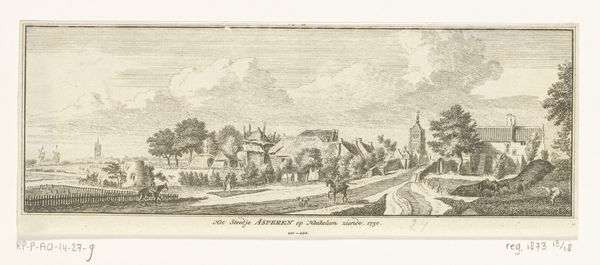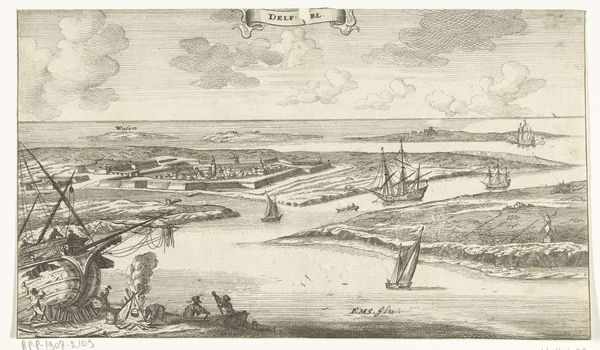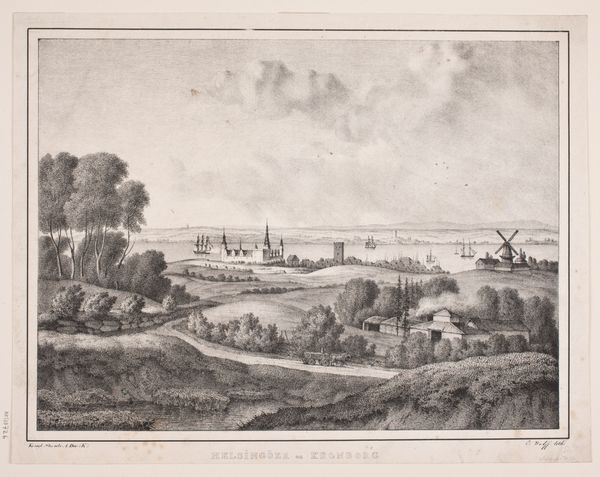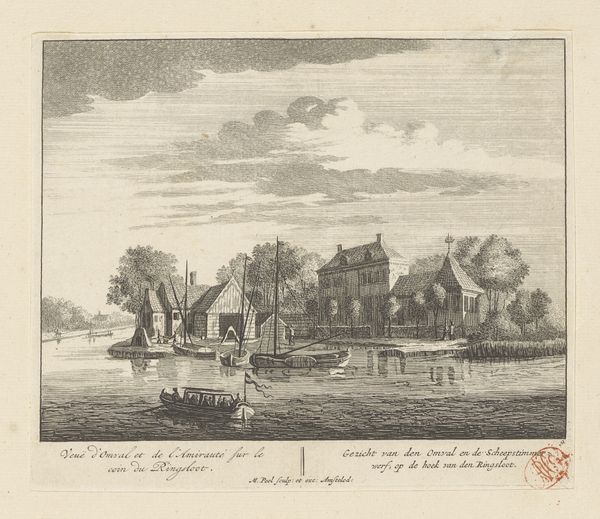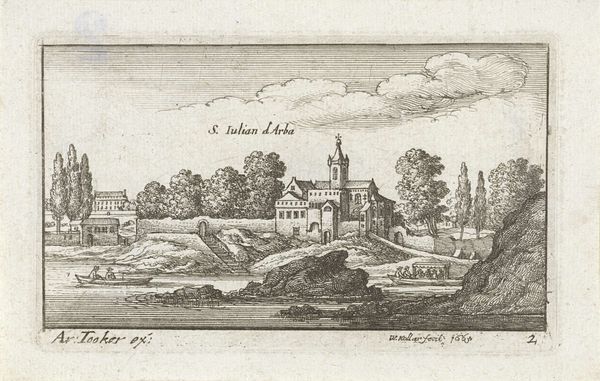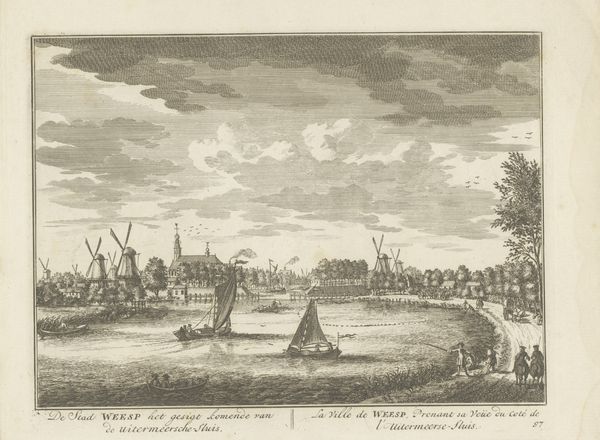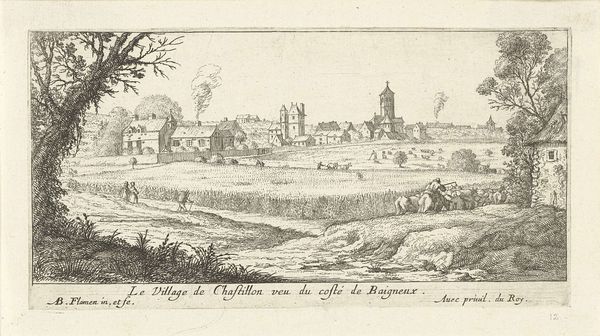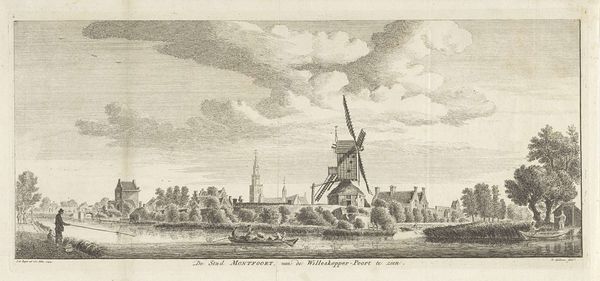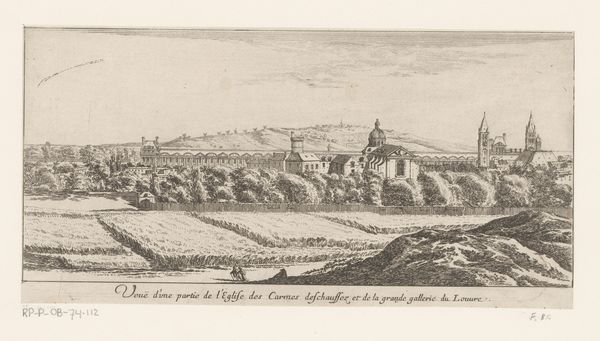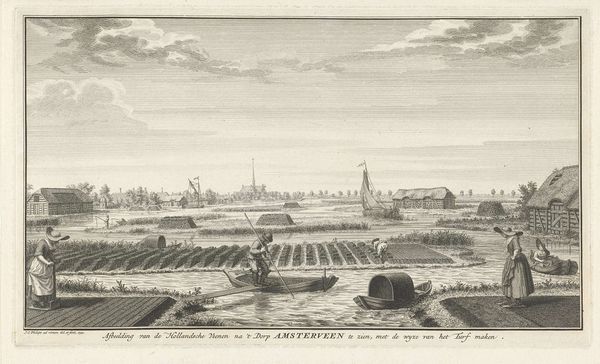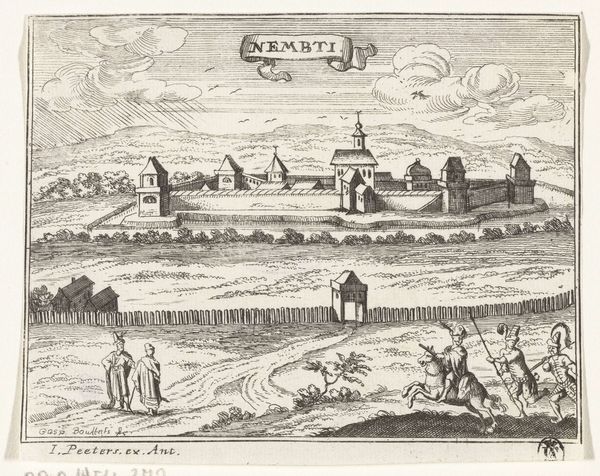
print, etching, engraving
#
dutch-golden-age
# print
#
etching
#
old engraving style
#
landscape
#
cityscape
#
engraving
Dimensions: height 80 mm, width 115 mm
Copyright: Rijks Museum: Open Domain
Editor: This etching, "Gezicht op Katwijk aan den Rijn" by Abraham Rademaker, created between 1727 and 1733, feels like a peaceful snapshot of 18th-century Dutch life. I am interested to know how this type of art relates to a larger social picture. What are your insights, examining through history? Curator: Well, landscape prints like these gained popularity during the Dutch Golden Age, as civic identity and national pride began being shaped. Prints made art more accessible, democratizing the experience beyond the elite. Note the prominence of the windmill. Editor: Yes, it does seem central. Why depict everyday subjects like windmills and townscapes? Curator: Exactly. Artists sought to portray their homeland in an age of emerging Dutch identity. These were not just landscapes but emblems of progress, industry, and Dutch ingenuity, feeding into a strong sense of cultural identity and national narrative. Also, consider who the audience might have been for prints like these. Middle-class merchants perhaps? Editor: That makes sense. It’s interesting to think about these scenes not just as pretty pictures, but as a means of fostering a collective identity through accessible art. This image being at Rijksmuseum now enhances that historical value as well. Thank you. Curator: Precisely. Reflecting on it, the relatively 'low art' form actually took on profound symbolic meaning to the population at large. I learned something myself today, considering it in light of modern nation-building.
Comments
No comments
Be the first to comment and join the conversation on the ultimate creative platform.
